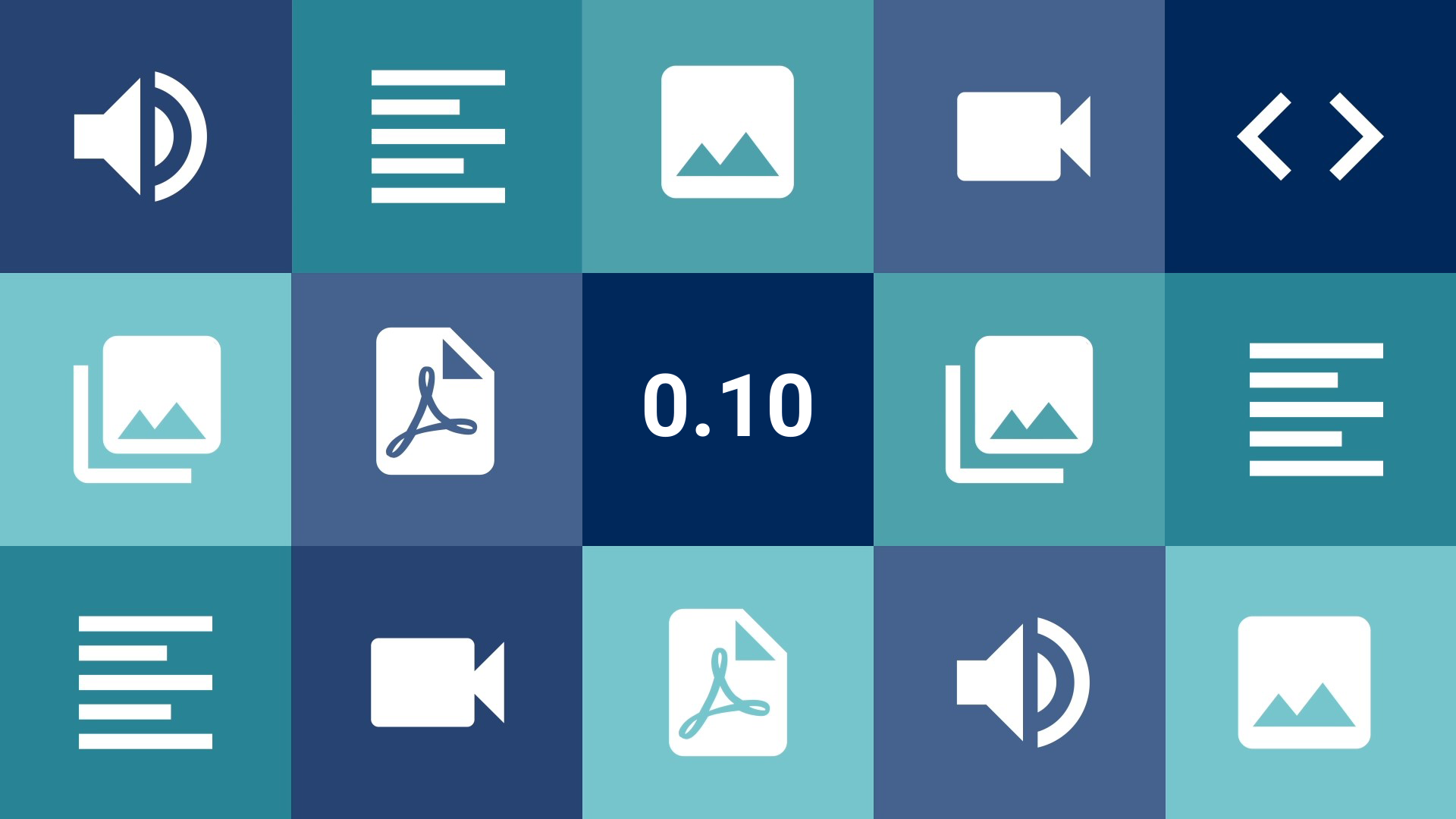Half of the year is behind us and we are happy to bring you one more version with improvements and new features to Tainacan.
New Features
If you have ever used a numeric or date metadata in your collections, you may have felt disappointed seeing that we only offered one filter for them, the Custom Interval, while for answering simple questions such as
Show me the items whose restore date is more recent than 1994
or even something like
Show me the items whose price is cheaper than $10.000,00
it was necessary to use the Advanced Search. Now, this gets much simpler.
Date Filter
With the Date Filter, you apply an operator to a search, bringing items whose specific metadatum has a value equal to, different of, less than, greater then, less than or equal to or greater than or equal to a desired day:
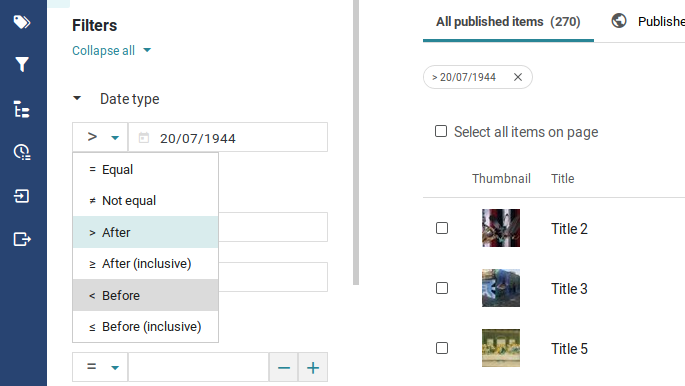
Numeric Filter
Alike the Date filter, with the Numeric Filter you choose an operator to compare with the given number:
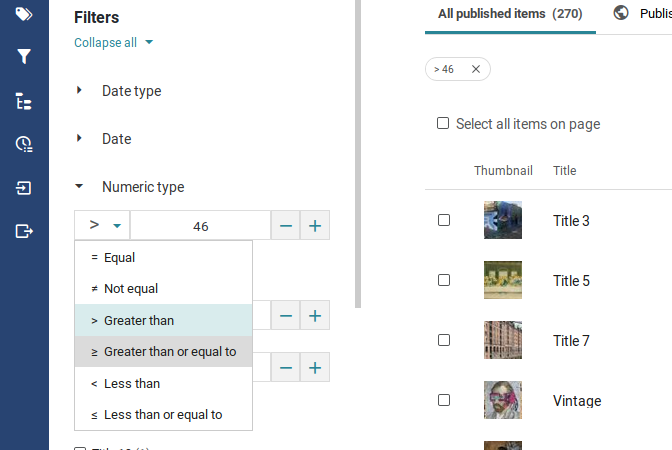
The filter also has a settings option for “Step”, which shall determine the increment value when using the buttons “+” and “-“.
New Gutenberg Block: Facets
Following our journey for integrating Tainacan with WordPress new tool for editing posts and pages, we announce another requested block today, the facets block!
It is worth an explanation, for those who a are not yet used to the terminology, that facets represent a vision of your item’s list with a filtering applied. If I create a collection of albums and books and create a taxonomy named gender for categorizing it, I may have a facet named “Romantic”, which shall redirect me to the list of items filtered by that term. But this is not only for Taxonomies. A list of items filtered by all of those with a relationship to an author X, also composes a facet. You may have guessed that facets are originated by filtering applied to certain values of metadata.
So let’s better understand how to use the Facets Block:
First, you choose the source of search, that may be the whole repository as well as a single collection. Next, choose the metadata from which the facet will be generated. On the video above, a taxonomy was selected. Taxonomies and Relationship metadata have the advantage of showing images (the term cover or the item thumbnail, respectively). There is also a new view mode shown on video, the Tags Cloud. With this view, the labels grow on size proportionally to the amount of items that exist on that facet. Many options such as “Show search bar”, “show load more button” and “show items count” are available so you can customize your narrative.
A well known example of a facets list generated in a similar way can be seen on the Museu do Índio:
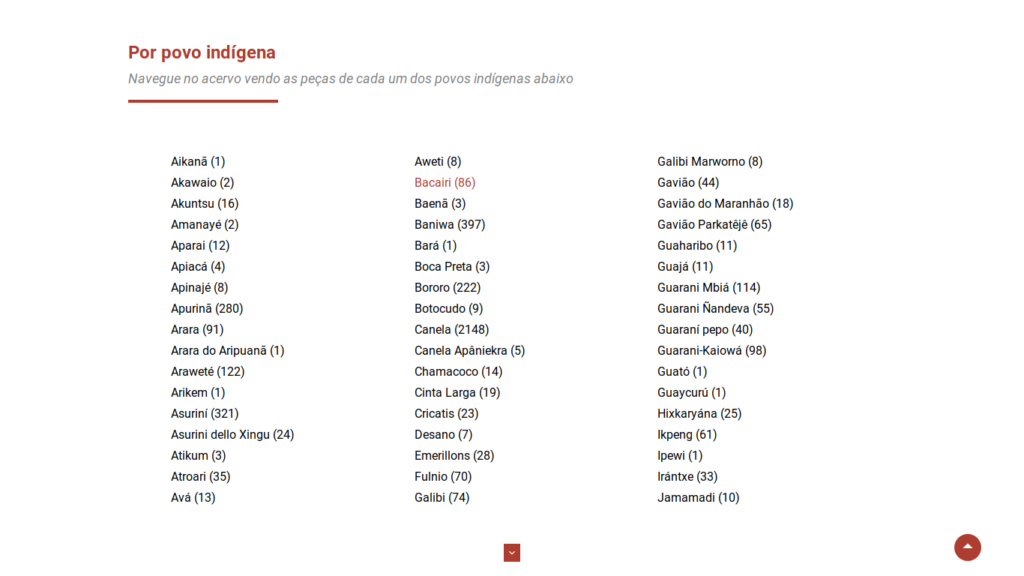
“Povo Indígena” (“indigenous people”) here is a Taxonomy. The block is dynamic so if new items are created with a certain People, the counters will be updated and if a new People is registered, it shall appear on the list.
Filter by Status
Tainacan lists, such as items, collections and taxonomies, are now clearer with the possibility of seeing private and public items in separate tabs, in case you have permission:

Usability
New features are cool, but improvements are always welcome. On this version, some small improvements may please those who work with Tainacan.
Better Numeric and Date inputs
The first may have been noticed on the new filters, but it’s valid for every case of the interface where these components are available. The input fields for Data and Number have been through some adjustments:
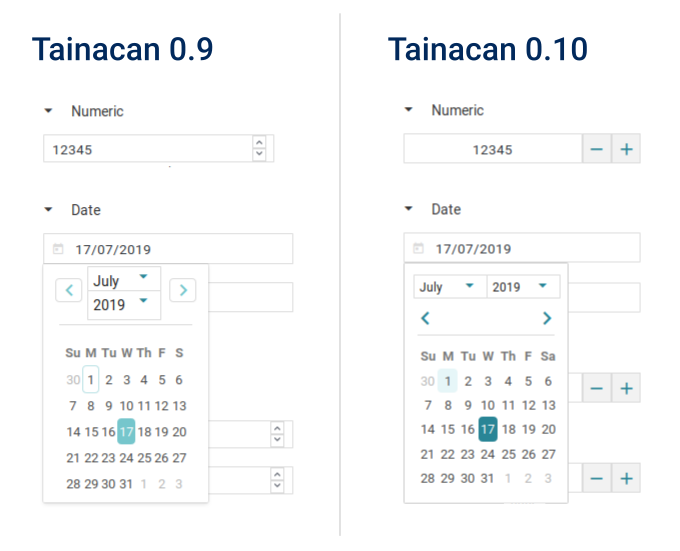
Clearer Sorting Buttons
An almost epic discussion have been faced since the first version of Tainacan, and it’s regarding one of the simplest elements in our interface: the sorting component. In our item’s list, a sorting can be applied by different sorts of metadata, both in ascending and descending order. But by using buttons to indicate this direction, a doubt arises: does the button indicate the current state of the list or the order that it will have once clicked? Beyond that, the arrows and lines that compose the iconography proved themselves insufficient to avoid confusions between users.
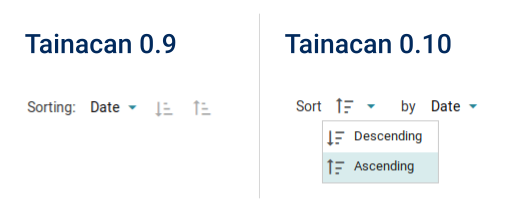
The solution offered above uses a narrative to let it clearer: “Sort Ascending by the Date metadata”.
Separate Scroll on metadata and filters columns
Working with tens or even hundreds of metadata and filters can be tiring, even with tools such as dragndrop available. A complain that we often receive is regarding the hardness of browsing among the two columns existing in the metadata and filters page. We hope that now, with separate scrolling for each column, it became easier to manage those lists 😉

Working Flow: Button “Create Another Item”

A simple suggestion received in our emails list, that might be useful to many: Now, right after creating a new item, the form footer bar shall offer an option of “Create Another Item”. This way, if you are creating many items consecutively, it won’t be necessary to go back to the item’s list to restart the job.
Working Flow: Metadata Collapses on Sequence Edition
And talking about creating items sequentially, if you ever used Sequence Edition feature, you know that opening and closing several metadata collapses that you desire to edit may be boring. Now, when enter a sequence edition, Tainacan will keep the information of which collapses are open or closed from your first item edition, so that the next can l be find easily.
And what else?
- Performance improvements on item edition page;
- Enhancements on Facet’s API;
- Adjustments on Admin home page;
- Removal of taxonomy metadata from the list of metadata that can be used for filling a relationship search;
- Improvements on link detection inside texts;
- CSV importer now supports special column special_comment_status for indicating if an item is open for comments or not;
- Automatically deletes a filter when the related metadata is deleted;
- Avoids error when generating thumbnails from PDF file if not available on server;
Get it now!
Version 0.10 of Tainacan is already available. You can download it or upgrade directly from your WordPress panel:
